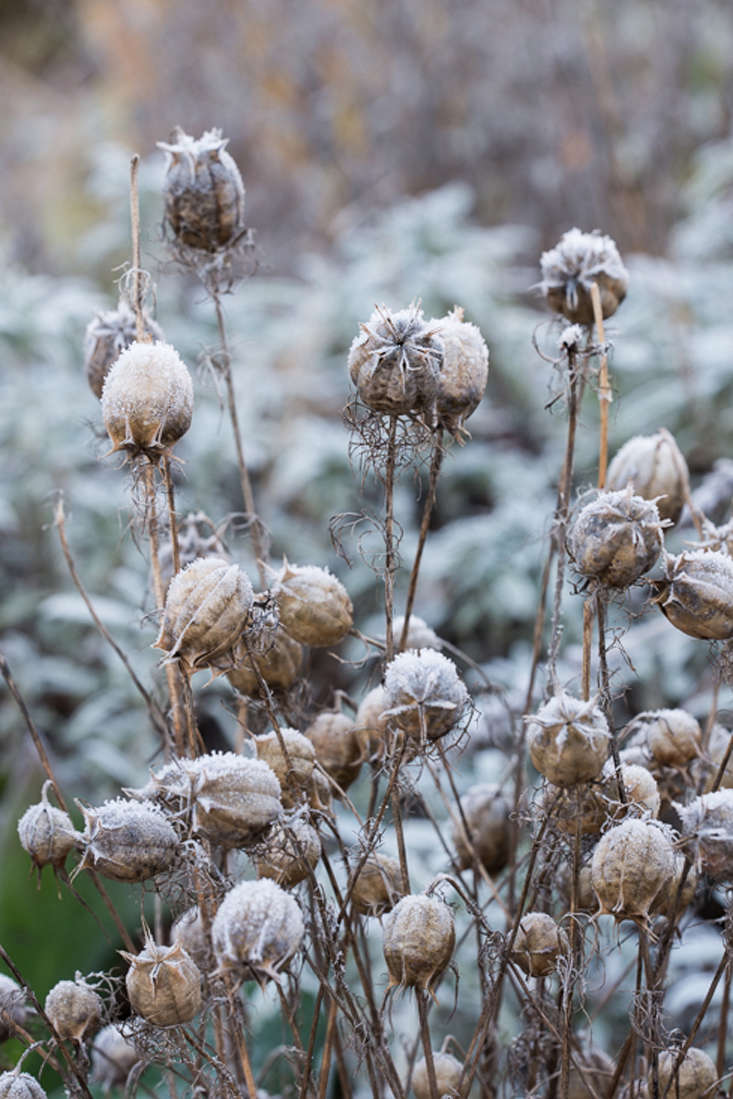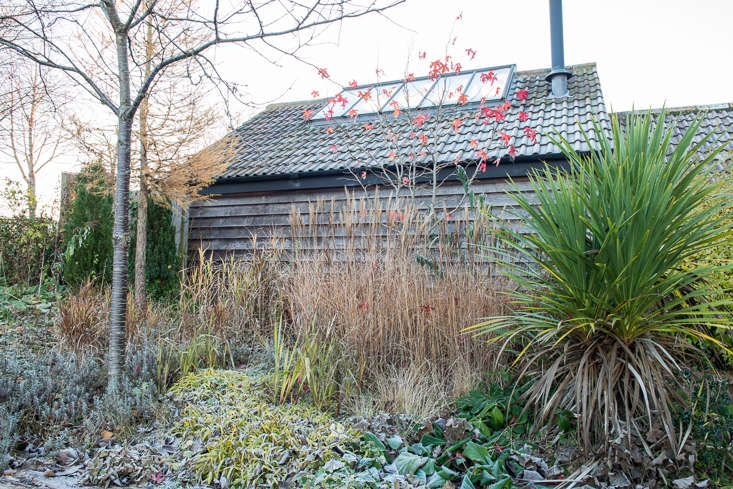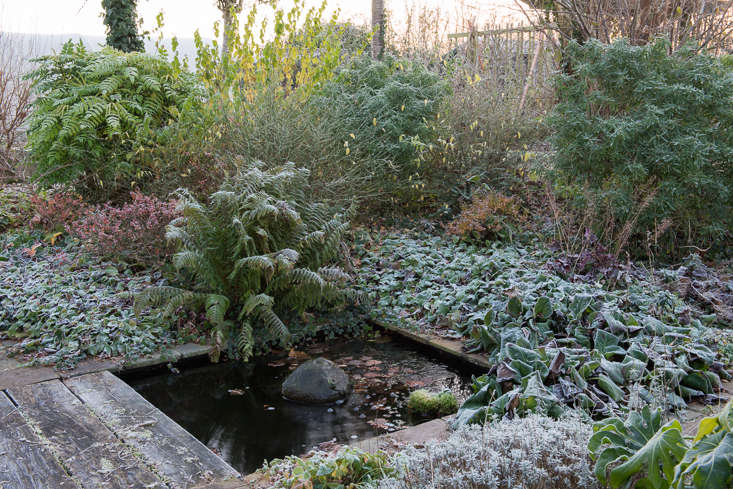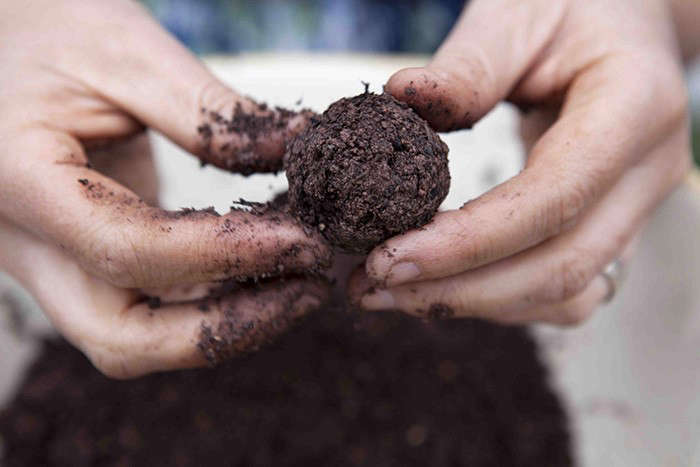Without encouragement, it’s tempting to ignore the garden for at least half of the year. Winter itself becomes the problem. And yet, the space on the other side of the glass is only dormant, not dead. It is not difficult to invest it with a sense of purpose and even life.
Problem: You look out of the window and nothing catches your eye or tempts you to go out.
Solution: This is the time to get planning.
Photography by Heather Edwards.
Above: Does your garden have good structure? Winter is useful for finding out. White birch and silver birch (Betula pubescens, shown here with Betula verrucosa) glow in the darker months, while providing valuable height. In summer, carefully considered trees will give dappled, as opposed to dense, shade. Espaliered against a wall, pollarded into stubby hand shapes, or chosen for the structure of their canopy, trees that take to pruning will look better, arguably, in winter.
When vegetable, herb and flower beds look half empty, a good structure of clipped shrubs and hedges, cut grass and mulched soil keeps a sense of purpose and activity. Bring birds closer to the windows with feeders and by growing plants that will provide them with a living.
Above: Winter has its advantages, for instance in the quality of light. On days which are not completely overcast and dismal, something special happens as delicate rays hit the garden sideways. Grasses that provide structure and movement in summer will shimmer when lit up in winter.
Above: Desiccated seed heads (like papery Nigella, shown here) have their own beauty, but only when they look purposeful, and not just forgotten. Cut them down when they get too bedraggled, and as the garden prepares for spring.
Above: An “all-year-round” garden does not rely solely on evergreens (like this Cordyline australis). As the tall grass Miscanthus sinensis shows here, structure can come from something more ephemeral-looking. Trees that hold on to at least some of their brightly colored leaves, for instance this sweet gum, are valuable in a winter garden, as are sorbus and crab apple, with radiant and often long-lasting baubles of orange, yellow and red.
Above: Even ground cover, when grown well in summer, will be flattered by frost in winter. Mahonia, with its jagged leaves and Victorian yellow flowers, enjoys a brief moment of unconditional love. In the winter sunlight its scent wafts over the air, joined by the better known efforts of Sarcococca, an inconspicuous evergreen with spidery white blooms and dark berries.
Above: Any sign of life is treasured during the dreary months but you can make this more deliberate by creating a better view. A small selection of winter blossom and berries in your foreground will bring a disproportionate amount of cheer.
N.B.: For more garden design solutions, pre-order my new book, My Garden is a Car Park: and other Design Dilemmas, for £12.99 from Amazon UK. For US readers, The Problem with my Garden can be pre-ordered for $17.99 from Amazon.com.


















Have a Question or Comment About This Post?
Join the conversation (0)